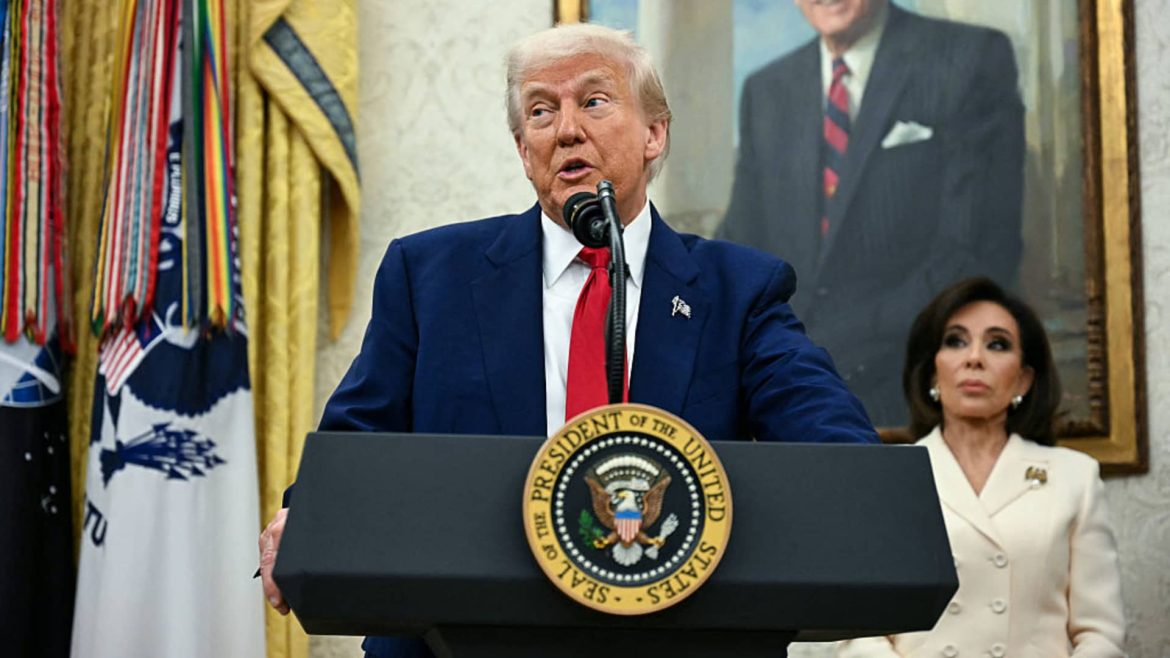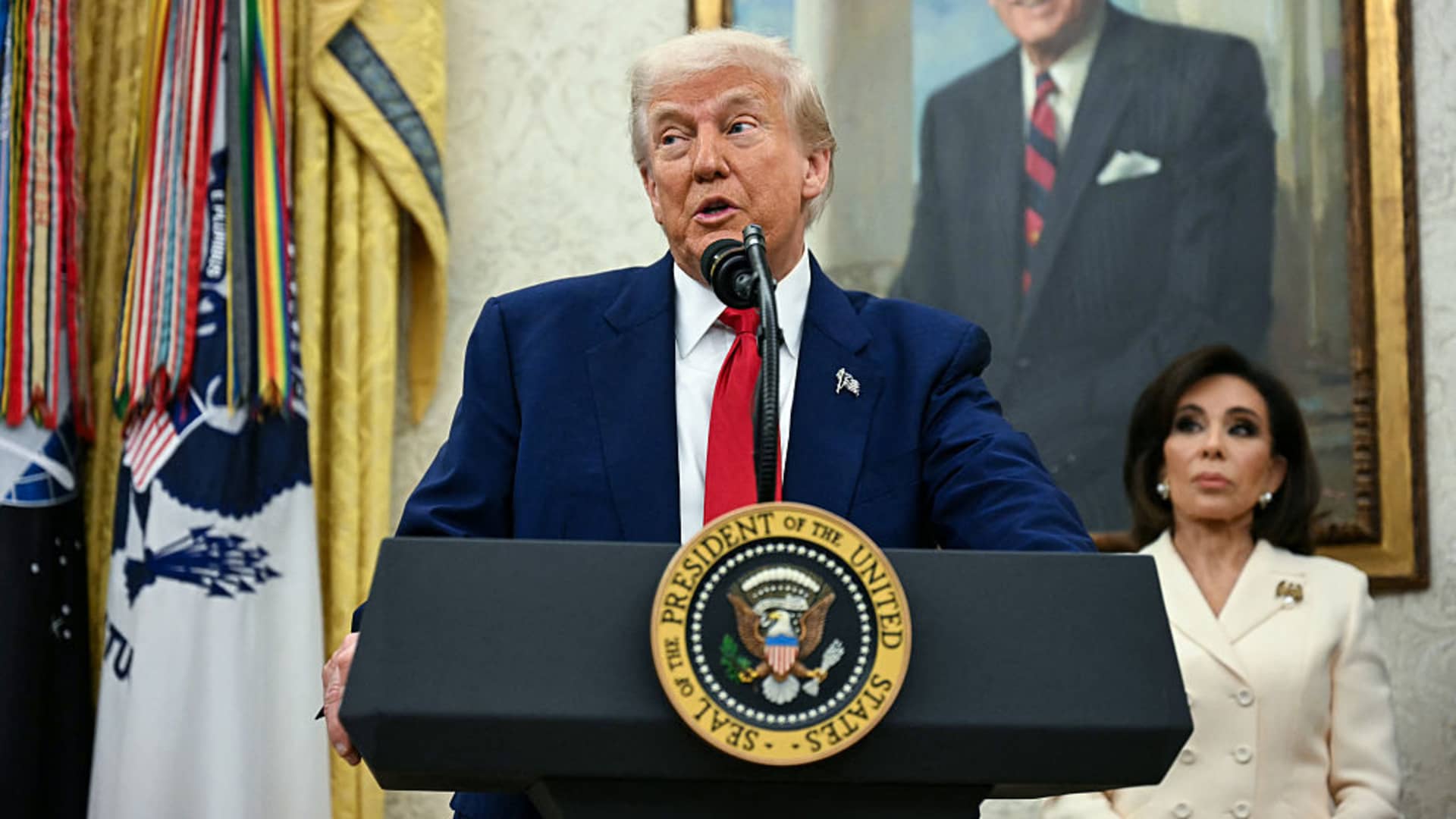Negotiation or Walking Back? Dissecting the “TACO” Trade Narrative Around Trump’s Tariff Strategy
The debate over President Donald Trump’s trade tactics—especially his imposition, adjustment, and occasional retreat from tariffs—has become a focal point of global economic discourse. Central to this is the Wall Street-coined term “TACO” (Trump Always Chickens Out), which captures a recurring pattern observed by analysts: Trump makes bold threats of tariffs that unsettle markets, then later eases or delays them, leading to market relief. Trump vehemently rejects the “chickening out” narrative, contending that his moves represent strategic negotiation tactics rather than retreat.
Understanding the “TACO” Pattern: Markets on a Rollercoaster
“Trump Always Chickens Out” emerged as a critique highlighting a seemingly repetitious approach where Trump escalates tariff threats to high or extreme levels, provoking sharp market reactions. Such moves have often precipitated significant downturns reflecting investor anxiety over trade wars and recession risks. Yet, in subsequent developments, Trump frequently postpones tariff deadlines, exempts some countries, or reduces rates—actions interpreted by many as backing down.
For instance, after threatening a sweeping 50% tariff on European Union goods, markets initially fell, but Trump later delayed this deadline from June 1 to July 9 in response to what he described as unsatisfactory trade negotiations. This dynamic feeds into the “TACO” label, portraying a leader who uses tariffs as threats but who ultimately relents under pressure, calming markets only after initial jitters.
Trump’s Rebuttal: Negotiation as Strategic Posturing
Trump consistently repudiates the notion that he retreats. He emphasizes that setting tariffs initially at “ridiculous high” levels is a deliberate negotiation tactic: start high to create room for concession, aiming to secure better trade agreements. He described this process bluntly as “negotiation” rather than “chickening out.”
His analogy likens the U.S. to a department store where he “sets the price,” implying control and leverage in trade talks. By making tough initial demands, Trump argues, the U.S. forces partners to come to the table seriously, generating deals more favorable to American interests than before. This perspective positions market volatility as a temporary byproduct of assertive diplomacy rather than weakness.
Trade Negotiations with China and the EU: Complex Reality
Trump’s trade relationship with China encapsulates these contradictions. While declaring willingness to negotiate, and touting “200 tariff deals,” the Chinese government publicly denies substantial talks, portraying the U.S. as overly aggressive and unilateral. This discrepancy fuels confusion about how much tangible negotiation is genuinely underway, versus posturing.
Similarly, Trump’s tariffs on the European Union and threats of high duties serve as pressure tools, but after vocal complaints by EU officials over regulatory standards (chemical rules, digital policies), Trump has softened deadlines or offered reprieves. Despite threatening a 50% tariff on EU goods, his administration remains engaged in talks, indicating a mix of hard-line rhetoric with practical concessions.
The ‘TACO’ Narrative’s Impact on Markets and Diplomacy
This oscillation between threat and delay complicates the global trading environment. Markets react swiftly to tariff announcements, swinging between fear and relief, which undermines stability. For trading partners, the unpredictability damages trust, as it becomes unclear what terms truly define the negotiation’s framework.
Furthermore, Trump’s public framing of tariffs as negotiation steps clashes with traditional diplomatic expectations, which favor subtlety and confidentiality to facilitate compromise. His open-air bargaining style, punctuated by social media and press statements, increases scrutiny and pressures negotiators on all sides.
Psychology of Trump’s Deal-Making Style
The “art of the deal” motif underpins Trump’s approach: maximal initial demands that allow room to maneuver, paired with bold threats signalling resolve. This style may have roots in real estate negotiations, where opening high can anchor expectations and create leverage. However, when applied on the international stage, the method generates risks—markets are less forgiving than real estate buyers, and global economic systems demand greater predictability.
Trump’s response to “TACO” criticisms—sometimes exploding at reporters asking if he “chickens out” and dismissing the term as “nasty”—reveals the sensitivity surrounding this narrative. The branding taps into a consistent pattern over years, making it difficult for his messaging to fully reshape the perception.
Conclusion: Negotiation or Retreat? A Complex Dance with Real Stakes
The discourse surrounding Trump’s trade tariff policy oscillates between two poles: one that casts his tariff retreats as capitulation under market and diplomatic pressure (“chickening out”), and another that frames his high-stakes bargaining as savvy negotiation aimed at improving America’s global trade standing.
In reality, this cycle of threat, market turmoil, partial rollback, and renegotiation reflects both strategic posturing and real constraints. The volatile nature of global commerce, domestic political pressures, and complex multinational relationships obligate a flexible approach that sometimes appears contradictory.
The “TACO” trade label crystallizes the frustration of markets and observers caught in the uncertainty, while Trump’s insistence on negotiation highlights an aggressive dealmaking philosophy seeking to reset global trade norms in America’s favor. Ultimately, understanding this interplay enables deeper insight into the challenges of modern trade diplomacy and the unpredictable nature of tariff-driven negotiations under the Trump administration.





